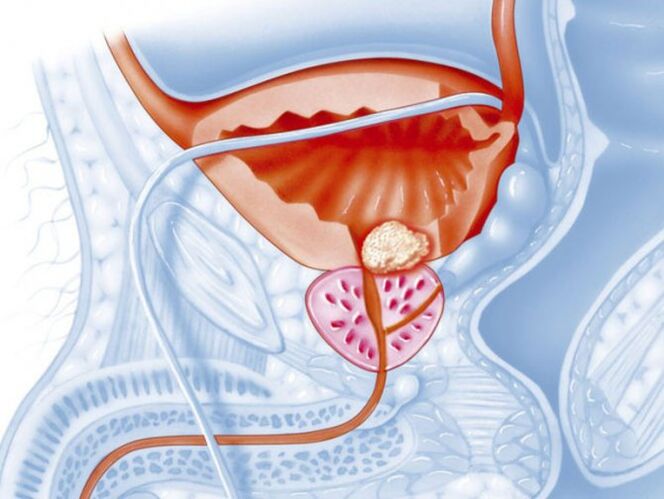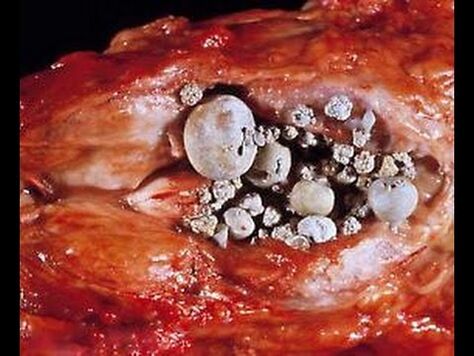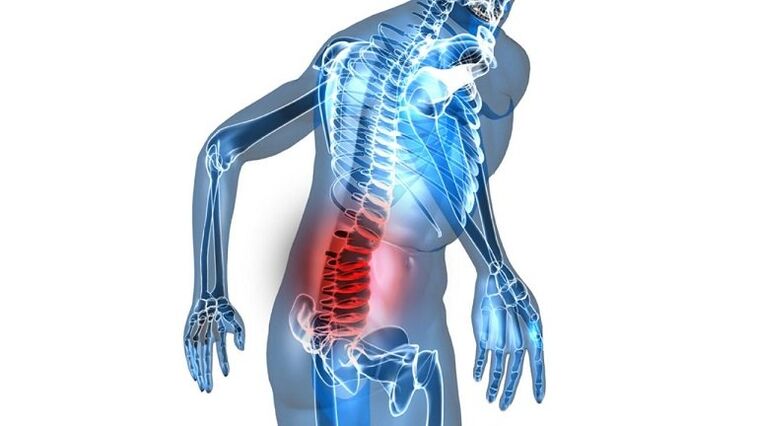Prostate disease is one of the most common and hidden diseases among men over 40. At first, the patient may not even know the problem exists, but over time these symptoms will make them feel themselves. If you do not consult a doctor in time, prostatitis will become a chronic disease and may cause complications. According to the severity, cause and nature of the course, different types of prostatitis can be distinguished.
The type of prostatitis depends on the form of its course:
- acute;
- Chronic
- latent.
What is prostatitis?
- Herpes
- bacterial;
- Calcareous
- Stagnant
- Infectious
- Suppuration
- Chlamydia
- Fungus
- gonorrhea
- Fibrous.
classification
Faced with such unpleasant diseases of the genitourinary system, such as prostatitis, many men want to know why they suffer from prostatitis.
Understanding the cause of the disease is helpful for accurate diagnosis and effective prevention.
Through the flow of form
According to the different course of the disease, prostatitis is divided into acute, chronic and latent, including catarrhal, follicular, and substantive (purulent).
The disease has the following forms:
- When men suffer from catarrhal prostatitis, there is a disease of urination and discomfort in the pubic area. This is the most common type of acute prostatitis.
- Follicular prostatitis is characterized by pain in the groin or anus, fever, and severe urinary system disease (dysuria). In a more advanced form, when the patient postpones the visit, acute pain will occur during urination and urine retention will occur.
- Substantial prostatitis-purulent content is formed in the prostate. In this case, there will be fever, sharp pain, and a frequent urge to urinate. The temperature rises to 39-40°C and it is almost impossible to defecate.
Acute prostatitis
Acute prostatitis is a condition in which prostatitis is present, which occurs in a short time and is characterized by various symptoms. The negative effects of pathogenic bacteria cause glands to swell. Disease-causing bacteria destroy the integrity of tissues and can cause permanent discomfort in the pelvic area even when stationary.
There are several main routes of infection that can enter the prostate:
- Rectal inflammation-lymphatic route;
- After infectious disease-blood-borne;
- Directly through the urethra-tubules.
Excessive accumulation of contents in the prostate creates good conditions for the growth of bacteria, leading to various complications:
- Abscess
- BPH;
- Prostate cancer;
- Decrease in efficiency;
- Infertility.
The symptoms of prostatitis are so painful that patients are forced to consult a doctor urgently for help. If you do not do this on time, prostatitis will become a chronic disease, which will be more difficult to cure. Antibiotic therapy combined with drugs that boost the immune system can effectively combat this disease.
Chronic prostatitis
The symptoms of chronic prostatitis are usually found in the context of hyperemia of the prostate glands due to an untreated acute form of the disease. It usually occurs in men over the age of 50 who have not sought help and have the ability to self-medicate. Many of them have complications due to accompanying diseases. In addition, at this age, not everyone has sufficient sexual activity, so secretly thickens and stagnates in the prostate, leading to dysfunction. Interrupting sexual intercourse can also cause fluid stagnation. According to modern research, about 40% of patients with chronic prostatitis symptoms will have erectile problems.
Usually, chronic prostatitis has mild symptoms that only appear when the condition gets worse. Patients will notice dull pain in the groin area, which will increase after physical activity and at the end of the day. The pain usually radiates to the lower back, scrotum and perineum. Noticed frequent urination, especially at night, when the stream is intermittent and pouring out.
The intercourse time becomes shorter, the erection is incomplete, and sometimes the glans penis is painful. Infertility usually exists in patients with chronic prostatitis; impotence is actually absent at this stage of the disease. Sometimes the color of the genitals changes and they turn purple due to improper blood circulation.
If left untreated, every symptom of prostatitis will worsen. This situation is similar to the manifestation of the acute course of the disease. Weakened immune system, stress, negligence in diet, bad habits-all these can make the condition worse and worse.
The chronic form often causes symptoms of diseases such as cystitis, kidney disease, and adenoma. The risk of urolithiasis and malignant tumor formation is increased. Usually, the pathological process is almost asymptomatic and is accidentally discovered in a laboratory test related to another disease.
Due to
There are many reasons for the development of prostatitis with infectious and non-infectious etiologies, as well as predisposing factors. As this happens, the following types of prostatitis can be distinguished:
- bacterial;
- Calcareous
- Stagnant
- Infectious
- Suppuration.
A sedentary lifestyle, frequent hypothermia, rare sexual activity, interrupted intercourse, smoking, alcohol abuse, and stressful conditions-all these conditions can affect the stagnation of secretions in the prostate glands and blood vessels nearby. Prostatitis is divided into several forms according to the cause of its occurrence.
Bacterial prostatitis
Bacterial prostatitis is caused by bacteria entering the prostate in various ways. It can be a type of bacteria or a group of bacteria. The disease can be triggered by the following reasons:
- fungus;
- Neisseria gonorrhoeae
- Koch's wand;
- Chlamydia
- Several bacteria can be infected at the same time.
The inflammatory process is usually related to the penetration of bacteria into the prostate caused by sexually transmitted diseases. Frequent mating without protective means can lead to diseases such as gonorrhea, chlamydia, and fungal infections. In addition, due to the violation of the work and rest system, the immunity is reduced, which promotes the development of pathology. Bad habits, such as smoking, drinking, a sedentary lifestyle, etc. , can also reduce immunity.

The most obvious symptoms associated with bacterial prostatitis include burning pain during urination, pain and cloudy discharge. Urine smells unpleasant. General symptoms accompanying poisoning were observed: dizziness, weakness, nausea, fever. You will feel pain when you ejaculate, and sometimes blood will appear. With chronic bacterial prostatitis, urination becomes more frequent and yellow or green discharge appears from the penis.
Calculous prostatitis
For calculous prostatitis, stones form in the gland ducts of the prostate. The form of this disease is very complex and accompanied by severe pain. There are many sources of clumps: phosphate, oxalate, calcium and protein.
There are two reasons for the appearance of stones in the catheter: stagnation of gland contents and urine entering the prostate.
The stagnation is related to various factors, which can interfere with the normal outflow of secretions. Long-term sexual abstinence, hyperplasia, the presence of closed duct tumors, and a sedentary lifestyle can lead to stagnation of secretions and destruction of blood vessels and lymphatic systems.

Dysfunction of the sphincter triggers urine throwing, the urine relaxes, and the urine flows from the inside to the outside. The presence of stones and sand in the bladder contributes to the development of stones in the prostate duct. They entered there with urine, settled and continued to grow, eventually reducing their exports. Reproductive organ damage and surgical intervention may cause sphincter dysfunction.
At first, stone-like prostatitis is asymptomatic. As the stone grows, the symptoms will appear and worsen. There is soreness in the lower abdomen or scrotum that radiates to the hips and lower back. Pain at rest was not observed, and only occurred during physical exercise, defecation and urination, and during intercourse and walking.
Large stones with sharp edges during exercise can damage the canal, not only causing pain, but also the release of blood in the urine and ejaculation. Stone wounds are easily infected, and then stone prostatitis can become contagious.
About a month later, due to calculous prostatitis, the work of the whole body is disturbed, and a person feels unwell, insomnia, fatigue and irritability.
In the late stage of calculous prostatitis, after a comprehensive diagnosis and examination, medication and surgery can be performed to remove the stones.
Congestive prostatitis
The stagnation of prostatitis is due to the delayed secretion in the prostate. In most cases, this phenomenon is observed in sedentary men who do not engage in sports. The result of insufficient breathing is that the blood circulation of the pelvic organs is violated, and the prostate suffers from insufficient oxygen and nutrient supply, stagnation and inflammation. If no measures are taken, the disease will become a chronic disease and cause great discomfort.
Congestive prostatitis can cause irregular sex life or no sex life at all. In this case, the man should release the gland independently from the secretion, but not excessively secrete the gland, because regular masturbation can cause harm due to incomplete ejaculation. Many spouses themselves find a way to prevent pregnancy, such as interruption of intercourse. It can also cause incomplete ejaculation and inflammation.

Sometimes hypothermia or varicose veins can become predisposing factors. Abnormal prostate structure can also cause stagnation. Periodic overheating and persistent constipation in the pelvic area can adversely affect secretions. According to the factors that cause the disease, it can be divided into several types of congestive prostatitis.
- Venous prostatitis. It occurs in people with varicose veins in the lower extremities. In this disease, all organs in the small pelvis are affected due to improper blood circulation.
- Congested. It develops as part of the prostate empties. Gradually overflow leads to stagnation.
- Chronic. When the wrong way of life becomes a habit, it will develop. If no measures are taken to change this situation, the disease will become a chronic disease. This usually occurs in single men who are obese in adulthood, and reminiscence disease is accompanied by aggravation of the disease. At this stage, the prostate is usually enlarged, which is easy to determine at the time of examination.
- Contagious. When the infection enters the genitourinary system, it will join the existing prostate inflammation.
The obvious symptoms of prostatitis are caused by difficulty urinating, pain in the groin, tension during defecation, and decreased sexual activity. The result of these symptoms is stagnant prostatitis, poor physical condition, irritability, decreased ability to work, and disturbed sleep.
Infectious prostatitis
Microorganisms that can cause signs of acute prostatitis include Escherichia coli, Staphylococcus aureus, Proteus, Escherichia coli, and Klebsiella. Some bacteria continue to exist in the body, but when in a dormant state, they do not cause an inflammatory process. When the puncture through the urethra to the mucosa of the prostate, the development and reproduction of microorganisms begins, and the result is inflammation. Indiscriminate and unprotected sex also allows harmful bacteria to enter the body.
The typical symptoms are pain in the scrotum, perineum, lower abdomen, lower back, pain in the small pelvis and burning sensation. Difficulty in urination, acute retention of urine occurred. In addition to the listed symptoms associated with infectious prostatitis, constipation, urethral discharge during ejaculation, hematospermia, and pain may also occur.
This is a dangerous disease. Even at the earliest stage, it can cause infection of sexual partners, leading to general blood poisoning or the development of pyelonephritis and cystitis.
Purulent prostatitis
Suppurative prostatitis usually occurs when a bacterial infection enters the prostate. The disease occurs in four stages.
- painfully. Suffering from acute respiratory virus infection, tonsillitis, and flu will develop afterwards. Purulent contents are present in the urine. There will be a burning sensation when the bladder is empty. The patient noticed a decrease in efficacy. The process that accompanies this type of prostatitis involves the surface tissue of the prostate.
- Focus. The process extends to glandular tissue. The pipeline expands and the outflow is disturbed. The glands enlarge due to the accumulation of pus in the urine and are excreted in the urine. Body temperature rises.
- essential. Connective tissue participates in this process, the edema becomes larger, and the temperature can reach 40°C. Tingling around the anus and a false urge to defecate.
- Absolutely the most insidious form of prostatitis. The temperature is very chaotic, there is a lot of pus and unbearable pain. This stage can be complicated by peritonitis and full of death.
Suppurative prostatitis can be complicated by a variety of symptoms and diseases, such as paragastritis, paracystitis, abscess, and sepsis. Usually, these pathologies are treated surgically and involve removal of the purulent sac.
Diagnostic procedure
The diagnosis of the type of prostatitis is not particularly difficult, and it starts with collecting recall records, which helps to understand the condition of the disease more accurately. A rectal examination is then performed, during which the size of the glands is determined, the nature of the pain is determined, and the presence of edema and seals is found.
In order to make a correct diagnosis, laboratory tests are prescribed:
- Analyze urine;
- Culture urine to detect sensitivity to AB;
- General blood analysis;
- Analyze the secretion of the prostate;
- Blood chemistry
- Rectal examination.
Other diagnostic methods include instrumental research methods. First, perform an ultrasound examination. If necessary, additional MRI and TRUS examinations are required. Relatively speaking, a new PET inspection method has recently emerged, which is considered the most useful.
Treat inflammation
Urologists treat all types of prostatitis. The traditional method is good, but it can only be used with medical prescriptions and must be approved by the attending doctor.
First, you need to find out the cause of the disease before you can treat it symptomatically.
- Active antibiotic treatment can help cure prostatitis. Parenteral antibiotics are the most effective.
- For obvious pain syndromes, analgesics and diuretics are needed.
- For constipation, prescribe laxatives.
- In the case of severe pain and difficulty urinating, nitrocaine blockers were used.
- Shows the process of vitamin therapy and immunocorrection.
- It is worth sticking to a special diet, excluding spicy, salty and smoky dishes.
- Provide bed rest.
From the local program, it shows that the temperature of the bath with water is 2 degrees higher than the temperature of the human body. The enema is made of herbal soup with anti-inflammatory herbs and 1% anesthetic. At the same time, the contents are slowly injected into the intestine and kept there if the patient can bear it.
Physical therapy also has a beneficial effect on the recovery of prostate function. It is forbidden to massage the prostate with acute prostatitis, but it is recommended to perform it in a chronic form. In order to restore metabolism, it is necessary to use normal blood circulation and reduce edema, and UHF and microwave should be used.
Due to the prolonged urinary retention time, a catheter needs to be inserted. At certain stages of the disease's development, surgery is required to open the purulent sac and install a drainage device.
The treatment of acute prostatitis takes several weeks to one month. Good results are usually observed. If the disease becomes more complicated or has entered a chronic stage, the process will be difficult, long, and may take several months.
During treatment, activities should be restricted and personal protective equipment should be used.
Medical physiotherapy equipment helps to cure prostatitis. It effectively eliminates the symptoms of prostatitis, can restore reduced sexual activity, relieve pain, relieve swelling and inflammation. The device can be used to treat and prevent pelvic organ diseases at home.
The device will relieve muscle tension, increase sperm production, strengthen blood vessels and prevent the development of other possible diseases in the small pelvis. The equipment for the treatment of male prostatitis is easy to use, is equipped with heating and vibration mode regulators, and is powered by the network. The compact size allows the device to be used under any conditions.
How to prevent the development of this disease?
Like any other disease, preventing various types of prostatitis is a healthy lifestyle without bad habits and a balanced diet. If you are diagnosed with prostatitis, you should not ignore exercise. For any inflammation that appears, you should consult a doctor immediately to eliminate the cause and prevent the infection from entering other organs.

You should lead a decent lifestyle and have regular sex with a regular partner. It is important not to forget the personal hygiene of the genitals and not to neglect the regular preventive examinations by the urologist. If a person knows what prostatitis is and is living a passive lifestyle, they should do some exercise to prevent congestion in the small pelvis.
Let's summarize
According to the causes and characteristics of the course of the disease, the acute and chronic types of prostatitis can be diagnosed. Chronic pelvic pain syndrome belongs to a separate group. Acute prostatitis is characterized by clinical manifestations such as chills, fever, and pain. The chronic form may not manifest in any way or have mild symptoms: urination violations, pain in the pelvic area, and as complications develop, it may lead to impotence and decreased fertility.

Acute prostatitis develops suddenly and is easy to diagnose. On the contrary, chronic prostatitis progresses in periods of alternating waves, remission and exacerbation. In the long-term process, the identification of pathogenic microorganisms will cause certain difficulties. Infectious foci that appear in the genitourinary system cause complications in the form of diseases of organs anatomically adjacent to the prostate. Based on the diagnosed prostatitis, the urologist will prescribe a differentiated treatment plan.






























